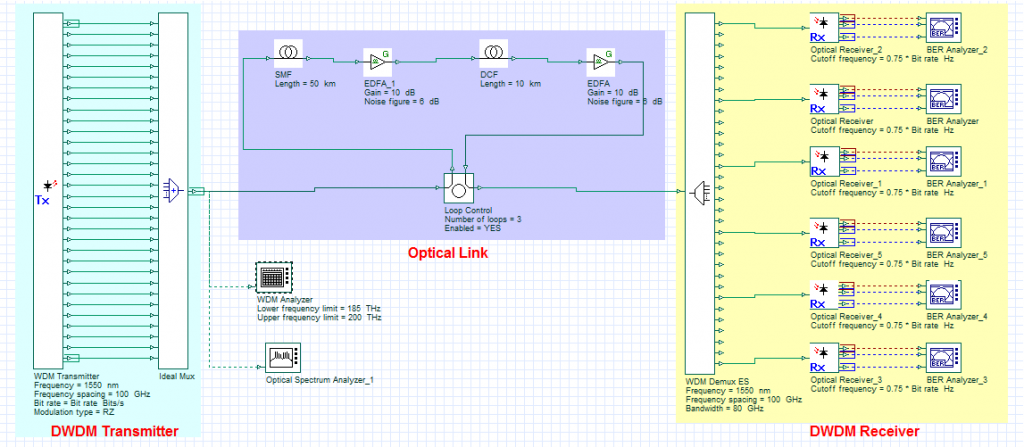- Related articles
- Optical Transceivers for Cisco WS-C2960-48PST-S Switch
- What Is GJDFBV Fiber Optic Cable?
- Optical Transceivers for Cisco IE-2000-8TC-G-L Switch
- All Cisco XENPAK-10GB-ER+'s information (List price, Specs, Compatibility matrix)
- Optical Transceivers for Cisco IE-3000-4TC Switch
- The Differences between PCI Express 1.0, 2.0 And 3.0
- Optical Transceivers for Cisco SG250-26P-K9-UK Switch
- Overview Cisco GLC-LH-SM Of SFP Transceiver Module
- Optical Transceivers for Cisco WS-C2960X-24TS-LL Switch
- All Cisco DWDM-XENPAK-50.92's information (List price, Specs, Datasheet PDF, Compatibility

Definition
Dense wavelength division multiplexing (DWDM) is a technology that puts data from different sources together on an optical fiber, with each signal carried at the same time on its own separate light wavelength. Using DWDM, up to 80 (and theoretically more) separate wavelengths or channels of data can be multiplexed into a light stream transmitted on a single optical fiber. Each channel carries a time division multiplexed (TDM) signal. In a system with each channel carrying 2.5 Gbps (billion bits per second), up to 200 billion bits can be delivered a second by the optical fiber. DWDM is also sometimes called wave division multiplexing (WDM).
DWDM Layout
Applications
1. Long-haul optical networks either in point-to-point or ring topology.
2. Expanding the capacity of an existing optical network.
3. Capacity leasing for network wholesalers.
Benefits
1. New BER Test Set enables the simulation of millions of bits for direct error counting.
2. Multi-parameter scanning enables system designers to study trade-offs with respect to parameters of interest and to choose an optimal design for deployments.
3. Enables users to analyze different algorithms for the electronic equalization.
4. Interfaces with popular design tools.
5. Significantly reduces product development costs and boosts productivity through a comprehensive design environment to help plan, test, and simulate optical links in the transmission layer of modern optical networks.
DWDM network planning tool
DWDM Network Planning Tool (NPT) is a highly sophisticated, multi-functional software application that adds intelligence, automation and efficiency to optical networking
design and operations. It is purpose designed for offering service providers a comprehensive set of engineering, planning and analysis functions for multi-layer converged OTN/WDM optical networks based on the market-leading Alcatel-Lucent 1830 Photonic Service Switch (PSS) and Alcatel-Lucent 1626 Light Manager (LM) platforms.
DWDM network components
The following are the network components of DWDM:
- Optical transmitters/receivers
- DWDM mux/demux filters
- Optical add/drop multiplexers (OADMs)
- Optical amplifiers Transponders (wavelength converters)
Conclusion
Optical networking provides the support to the existing and the emerging technologies and with almost limitless amounts of bandwidth capacity. The networking using the DWDM technology enhances the unified infrastructure which is capable of meeting the telecommunication demands on today and tomorrow.
Please click to check more related concepts:
| Transceivers Wavelength |
| Bidi |
| WDM |






































































